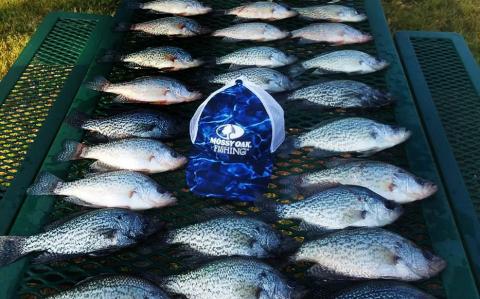Jill J. Easton | Originally published in GameKeepers: Farming for Wildlife Magazine. To subscribe, click here.
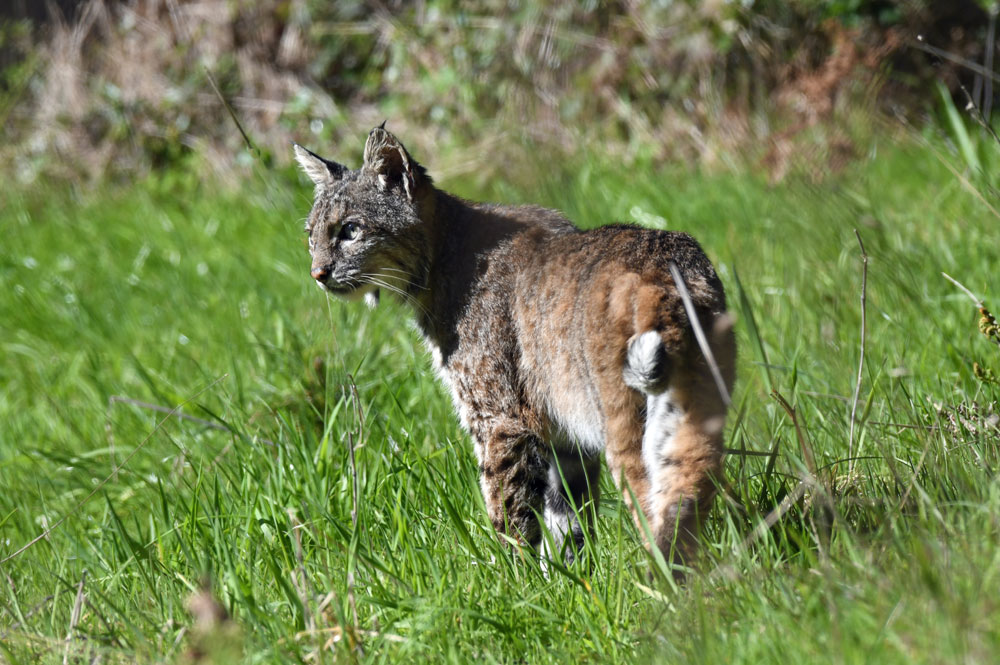
It was a sight to make any land manager sick. A turkey nest only a dozen yards from the dog kennel had been raided. Most of the eggs were broken and eaten. Others had just been bitten open, the untouched chicks inside were only days away from hatching. Scattered feathers were all that was left of the hen that stayed to defend her nest. It was an unfortunate loss on a Nebraska ranch with a declining turkey population.

of resources to trapping. The
most economical route is to learn
how to trap yourself. Here, the
author makes a fox set.
The nest robbers were probably members of the local coyote pack, but it could just as easily have been those big Nebraska coons, foxes or bobcats. Turkeys and all ground-nesting birds have plenty of enemies and few defenses during the incubation period and during the weeks before the young birds fledge.
Just about every predator out there likes a meal of eggs or tender poults. If you want to raise more gobblers and also increase your quail, pheasant, dove and duck survival rates, you should consider attacking the problem at its source. Control the predators that are eating your next generation of birds. One of the most effective ways of doing this is to start a trapping program.
“There are three major factors that affect the success of ground-nesting birds,” said Thurman W. Booth, Wildlife Service’s State Director for Arkansas, Animal and Plant Health Inspection Service (APHIS). “Those factors are weather, habitat and predators. Not much can be done about the weather, but controlling predators can make a big difference on many pieces of land managed for wildlife.”
Ground-nesting birds may lose more than 90 percent of their eggs and over 70 percent of chicks to predators, according to Carroll Littlefield, a researcher on Sand Hill cranes. That’s a lot of birds that won’t be in the population to reproduce or light up a hunter’s eyes in the years to come. There are many ways to find out which predators are causing the problem, but the end result will be the same. Since poison is illegal, your choices are to trap the animals yourself or bring in a trapper.
Getting started
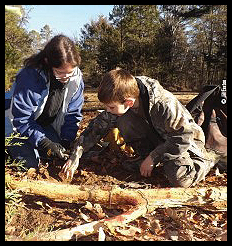
veteran trappers that will come to
your property to teach you how,
there are numerous resources to
aid one in learning how to trap.
If you decide to solve the problem yourself, the first step in any predator control operation is to check with your state wildlife agency to find out if a depredation permit or trapper’s license is necessary. Fur trapping is only legal during certain months of the year, but most wildlife agencies issue special depredation permits whenever a landowner has a nuisance animal problem.
It is also important to note that in most states it is illegal to transport an animal to another location and turn it loose due to the potential for spreading diseases. Transporting live animals across state lines can bring on some stiff federal fines. What we’re talking about here is “catch and kill” not “catch and relocate.”
If you’ve never done any trapping, state trappers associations and resource agencies like APHIS or the Cooperative Extension Service can often provide help. Some state wildlife agencies are more helpful than others, but every state has some information on trapping. State trappers’ association websites sometimes list trappers who live in different regions of the state who will provide training and help to new trappers. Trapper’s websites, magazines, books and DVD’s are other good places to get trapping information.
“When animals become a problem, we have seven Conservation Contractors around the state to help landowners with their difficulties,” said Rex Martensen, Private Land Services Field Program Supervisor for the Missouri Department of Conservation. “They will figure out what animal is causing the problem and train the landowner on how to take control of that situation.”
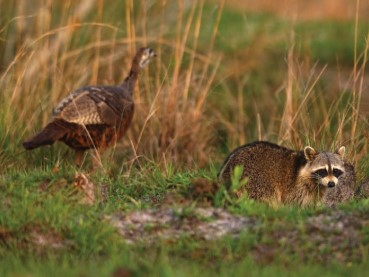
can also take down live prey—from a small turkey
poult on up to a whitetail fawn.
Every state is different, so find out your state’s rules and regulations and what your state wildlife agency has to offer. If you decide to trap the animals yourself, many states require every person who uses traps to take a training course before putting the first steel trap in the ground. Then you have to buy traps, probably in a variety of sizes and learn how and where to set them. Finally, if you are successful trapping the animals you have to figure out a way to dispose of the carcasses. The choices are to dump the dead animals, sell the fur on the carcass, or learn to skin your catch and put up the pelts. Trapping more than a few acres can quickly become a time-consuming and difficult chore. For big areas, it can be a full-time job since most states require most traps to be checked on a daily basis.
Plan B
If you decide to find someone else to do the job, you also have choices, and there are decisions to be made. There are professional trappers who can usually be found in the phone book under nuisance animal control. Animal damage control trappers will remove the animals and often repair damage. Since they are specially licensed, if you hire one he should be a professional who can do the job.
Unfortunately for most landowners and managers, they charge a fee for their services, either by the animal or by the job. To give you an idea of the cost, in Arkansas, ADC trappers usually charge $50 per coon. Finding someone who will give a per-job price may be more difficult. Other states may be higher or less expensive per animal, especially when dealing with far-ranging animals like bobcats or coyotes that may take weeks or months to catch.
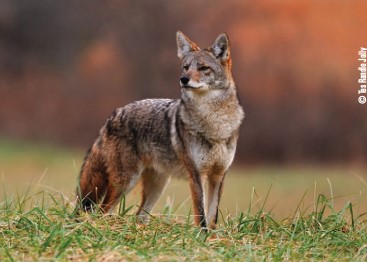
longer for hired trappers to remove than fox, raccoons
and skunks.
The other choice is finding a trapper. The cost of hiring a trapper to remove a large percentage of the predators will vary considerably depending on whether you are planning your predator removal program during trapping season or earlier in the year.
Again state wildlife agency and trappers association websites also have a list of these trappers, but many are not updated regularly. It may take eight or ten calls to find someone in your area who is still trapping
Many trappers are willing to trap private property during trapping season for a minimal amount of money for gas and expenses, or even for free if they can keep the animals they catch. If you want the predator removal work done during warm weather when furs are unprimed and worthless, the trapper will have to be paid for his time.
The best way to find a trapper is to talk to other large acreage landowners in your area and find out who is doing their trapping. Getting a recommendation from someone you know and trust means an increased probability you will get a trapper who respects your property. A competent trapper will remember to do important things like closing gates and setting traps in a way where he won’t catch the family dog.
What is your bottom line?

and while coyotes and bobcats won’t pass up a nest
full of eggs, they seem to concentrate more on the live
poults.
Before calling in a trapper, it’s important to decide on what end result you are trying to achieve. Unless you have a high fence buried several feet into the ground and have all predators inside the area, you are not going to get rid of every egg-eater on your land. Even if it were possible, a predator policy would be a mistake. Within months, rabbits, mice and rats (just to mention a couple of species) would begin to destroy your habitat. Remember predators eat nuisance animals too.
The goal should be to take out enough of the predators to give ground-nesting birds at least a 50 percent success ratio. But even if you remove most of the problem egg-eaters this year, if predator control isn’t an ongoing effort, in a short time new animals will come in and the cycle of problems will begin again.
Ongoing predator control is a useful and often necessary tool for successful wildlife management. If you don’t already have a regular relationship with a trapper, you need to search out one. Not only will you see a big increase in ground-nesting birds, but fawn survival will benefit as well.

















